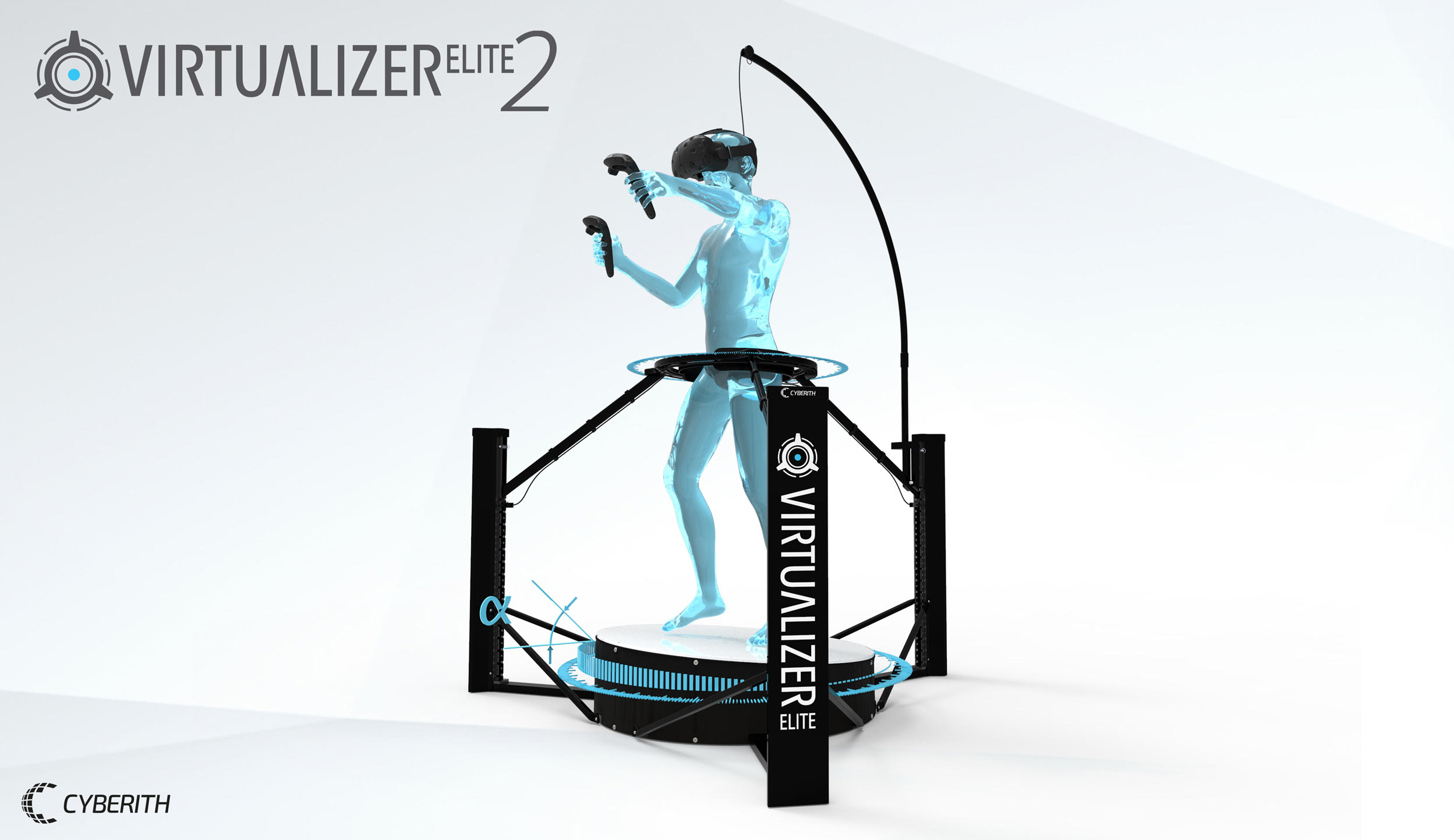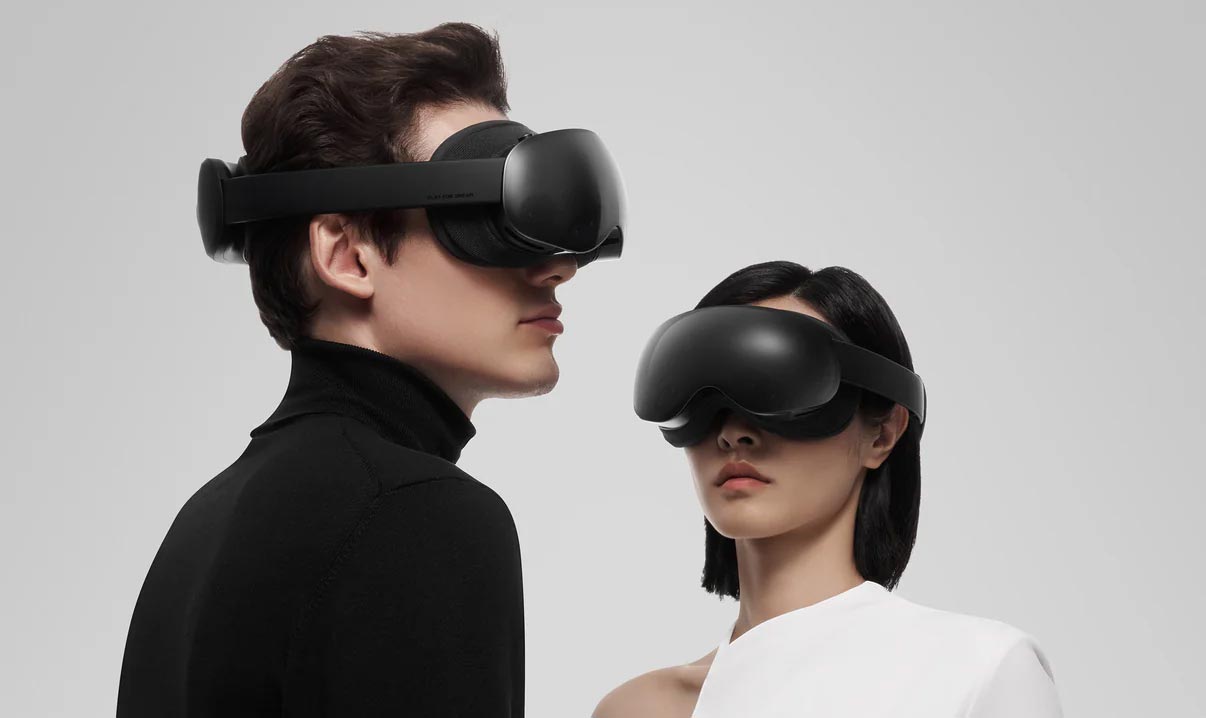Cyberith announces 2nd gen Virtualizer, still thinks about its backers
The Cyberith Virtualizer. One of the products that generated most hype in the VR communities some years ago… do you remember it? I’m sure you do, and if not, well, this video my refresh your memories:
It was a VR treadmill that promised the possibility of playing cool games in VR by running in place, dodging, crouching and firing all from your home. After a very successful Kickstarter campaign in 2014, the project entered in a confused phase after the funding and then ended up with the device being just a B2B product (exactly as all the other treadmills, like for instance the Virtuix Omni). This created a lot of anger from all its backers that have never seen the device they preordered. After that, I admit that I have never heard about the device that much.
This until one/two months ago, when Cyberith has announced a very cool update to the Virtualizer, that now reaches its second generation. The new device, called Virtualizer Elite 2, adds a motion platform that makes walking in VR more natural and effortless. These are very welcome improvements and show how the company is still alive and it is still caring about improving its current
I had the pleasure of sit down with Holger Hager, the CEO of Cyberith and talk with him about this new project of his. It was a very interesting talk… and of
Hello Holger, introduce yourself to my readers!
Hello Tony, I am Holger, I am one of the two founders of Cyberith. My personal background is a technical-scientific one and I’ve been working in VR full time
You are the CEO of Cyberith. For the few people that don’t know this name… what does your company do?

The core products of my company are the Virtualizer products, that allow for locomotion in virtual environments. These products, that are also called “VR Treadmills” keep a user safely in place while he’s able to walk through large sized VR environments.
Our first generation products have been introduced to the market for B2B clients in 2016 and have been mainly used in the sectors of R&D, Training & Simulation as well as Commercial Entertainment.
Three years after our initial product launch, in March 2019, we launched our second generation VR Treadmill, the Virtualizer ELITE 2.
Alongside our core products, we also offer related services, such as Application Development, to clients who request full solutions.
You have just announced an improvement of your Virtualizer treadmill, called ELITE 2. Can you talk us about it?
Sure, we have released the Virtualizer ELITE 2, which is our second generation Virtualizer VR Treadmill. The main difference in between our first generation Virtualizer ELITE and the new Virtualizer ELITE 2 is the implemented Motion Platform. This Motion Platform, that is powered by two electric motors, actively supports the user in walking and makes it easier to move through VR environments for anyone.
Why is in your opinion important having a 2-DOF moving platform? What are the advantages?
After launching the first generation of our products and receiving customer feedback, we found out that there are two major points, that we needed to keep working on: learning to correctly walk inside the Virtualizer took some time for many novice users. While some users were extremely quick in getting it, some others required significant training. The second point is related to physical effort. Walking in our first generation products requires more physical effort compared to walking on a street in reality. The goal is to match the physical effort of real-world walking with walking in the Virtualizer.
The implemented 2 DoF Motion Platform directly addresses both of these points. When walking forwards, the platform is elevated in front of the user, which allows for an easy gliding and thus dramatically reduces both the physical effort as well as the required learning phase. With the right angle chosen, it is no longer required to push your hips forwards in order to initiate walking in the Virtualizer. This makes using the product a lot simpler and more intuitive.
Very importantly, the angle of inclination can be adjusted easily according to the user

What are the difficulties of creating a good VR threadmill?
I think there are two main components that need to work very well in order to create a good VR Treadmill.
Physically walking and running inside the system must work well and easily. This is the basis for any VR locomotion product. Especially walking must be intuitive and ideally also easy to learn. Depending on the application, having a learning phase can be acceptable, but in general the easier it is to learn it, the better it is.
The second component I think of is the Tracking System and the Software Interface. Your real movements need to be translated into the VR application reliably, precisely and with very low latency. In case you don’t have a good motion tracking system, you will encounter many issues that can include motion sickness and will lead to a bad experience.
Treadmills and room-scale are two solutions that exclude each other. What are in your opinion the advantages of using one over the other?
The obvious advantage of a VR locomotion device like the Virtualizer is that such a product allows you to walk around large sized environments. Whenever you want to be able to access virtual spaces larger than
There are also other advantages of using our products, but the one I mentioned first is the most significant one for most of our customers. Other advantages include safety, as the user is safely secured inside a Virtualizer, and also the ability of incorporating physical effort and physical stress into the VR Simulation or Game. There is a difference in between actively running on a battleground and pressing a Joystick!
About the advantages of Room Scale Systems

There are people in the community saying that your company has started by “stealing” the money of the Kickstarter campaign. What do you answer to them? Can you tell us the story of your Kickstarter campaign from your point of view?
Sure. When my business partner and
During that time, there was a huge hype around VR and we believed too much in various forecasts and predictions. In fact, the reality turned out to be different than our expectations, which forced us to focus on B2B and professional markets rather than the consumer market first. Bringing a consumer product to market requires production rates of many thousands of units to work out economically. Thus, it was not possible to complete this Kickstarter campaign as of today. It is an ongoing project, which is terribly delayed.
We continue to be fully dedicated
So, threadmills are now a B2B product. Who are your customers?
Yes, they are B2B products. And if I recall correctly, there was never a VR Treadmill that was really launched and sold as a consumer product so far. I am aware of crowdfunding, pre-orders
In my opinion, the obvious reason for this fact is the limited size of the VR market for home users. Any treadmill is a sizable and rather expensive product by concept, which makes it rather difficult to bring them to the user’s living rooms. If you combine that fact with the fact that the potentially reachable audience is limited to people who actively use an HMD, it starts where it becomes difficult.
Most of our customers can be grouped into three different sectors: Research & Development, where many of our customers are universities, research institutions

Will them ever become a consumer product?
It is very hard to predict the future, but I think that VR Treadmills might become consumer products in the future. I just don’t see that happening immediately, because in order to make these products to go mainstream in the consumer market, VR Headsets need to be in used in most homes before.
Is the market profitable?
Our company is entirely financed by revenues since years and the market is definitely growing, as many companies and corporations start to more seriously incorporate VR into their businesses and processes.
However, as a small company in the technology sector, we are fully focusing on constantly improving our products and solutions in order to not only keep, but to expand our technological advance. Thus, we are heavily investing
How do you envision the future of VR?
I think we are talking about a very long future in this case. VR solutions have been existing since decades and the whole topic of VR was coming to the people’s attention in waves. However,
In my opinion, what is most important for the future of VR is not the often discussed “lack of content” or that VR would be too expensive for a mass market audience. I think the VR industry needs to continue to improve the quality of VR!
All of us must not stop working on improving the products in order to convince a growing number of people of Virtual Reality. VR experienced amazing achievements and has undergone dramatic improvements during the recent years. But, I am concerned about a reduced speed of development, in case some mayor players in the field continue to focus on “accessibility” only, while not investing in pushing the boundaries at the same time.
Over all, I think the technology will change and improve dramatically over a decade or two. There is mayor topics to work on and I hope things like focal surface displays and foveated rendering with high-res screens become available sooner than later.
What is the biggest lesson (or lessons) that you’ve learned in these years when you have been a VR startupper?
Puh, I am not sure where to start at 😉
Founding a new company, that developed a totally new product in the fast moving VR sector tought me lot for live! I think any honest person would admit that.

So, let’s say the biggest lesson is to truly understand how much effort is involved in creating a totally new product, that needs to work both technically and economically. Running a Start-Up company active in a dramatically changing and fast moving sector as VR, is hard enough. Directly starting with a totally new product, that no one really has created before, that involves both Hardware and Software components, doesn’t make things easier.
After all, I think we can be happy about what we achieved so far, while we need to continue to work hard in moving forward successfully.
Anything else that you want to add to this interview?
Thanks a lot for your questions and this interview!
I really want to thank Holger for this awesome interview and all the detailed answers he provided me and I want to wish him good luck for the future of Cyberith 🙂 . And I also hope that all backers will get a device… so that everyone will be happy.
I hope you have enjoyed this interview as well, and if it is the case, please share it on your social media channels! 😉
(Header image by Cyberith)
Disclaimer: this blog contains advertisement and affiliate links to sustain itself. If you click on an affiliate link, I'll be very happy because I'll earn a small commission on your purchase. You can find my boring full disclosure here.



